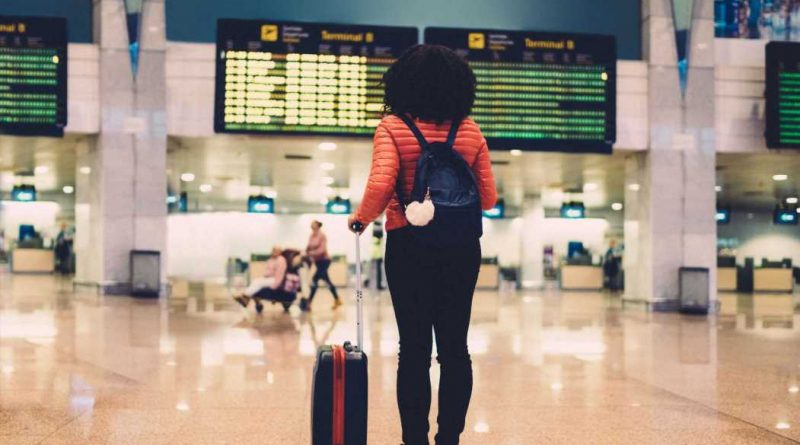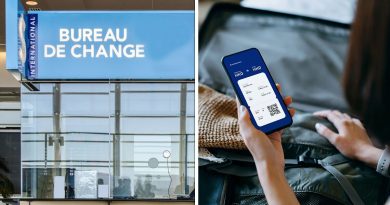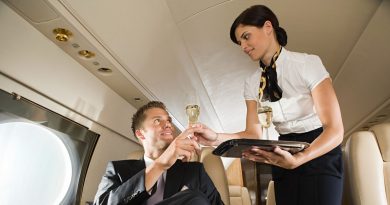What to Expect When Flying This Summer
After more than a year of grounding flights in record numbers, it’s official: Air travel is making a significant comeback.
As more Americans are vaccinated, the number of air passengers is also growing. According to the latest data from the Transportation Security Administration, more than 1 million fliers have consistently passed through U.S. airport security checkpoints each day this spring, including nearly 1.6 million people on April 2—the highest number recorded since the start of the pandemic.
But as more inoculated passengers step onto planes, travelers should still be aware of the safety precautions in place during their journey through airports and inside airline cabins. Here are six tips to keep in mind for an easier and safer flying experience over the coming months.
Masking up is still required
Even if you’re fully vaccinated, it doesn’t mean you can ditch your mask yet: Under federal mandate, face masks are still required for every traveler over the age of two, regardless of vaccination status. The mandate applies to the TSA checkpoint, inside airports, and on all domestic airlines (most international carriers have similar rules, too). Some airports provide complimentary masks and hand sanitizer, and many airlines stock backups, too.
Inside the aircraft, airlines are still investing in deep cleaning efforts. Most carriers are still sanitizing most aircraft touch points between flights using electrostatic sprayers or other disinfecting treatments. Many airlines distribute disinfecting wipes upon boarding so that customers can clean their own area as an added measure of reassurance. It’s wise to bring your own, too.
Tip: TSA now permits larger bottles of hand sanitizer at airport checkpoints (as large as 12 ounces, up from the typical 3.4-ounce bottles).
There are fewer empty seats
Anyone flying this spring or summer can expect flights to be crowded and likely even sold out. That’s partly because the effort many airlines made to block middle seats between passengers have faded as more travelers show willingness to fly and demand rises.
Delta is the only domestic airline still blocking seats, and the carrier says it will do so only until April 30. After that date, no U.S. airlines will block seats for social distancing measures.
If the thought of being close enough to knock elbows with your seatmate is too much to bear, you can check ahead of time to see how full the plane is and try switching to an emptier flight. Another option is to purchase a premium cabin seat for more stretching room.
In the airport, there may also be fewer places to sit with more travelers flying. Consider walking to a gate that is not being used for more space or asking about a day pass to an airport lounge, many of which are still enforcing capacity limits and other distancing measures. Just keep an eye on your flight’s departure time.
Tip: Many airlines allow you to purchase an adjacent seat to keep empty, although you’ll likely need to call them directly to make this request. Emirates allows travelers to book up to three adjacent seats for a discounted price, but this option is only available at the airport check-in counter.
In-flight viral transmission remains rare
“You’d have to sit next to an infected passenger for a minimum of 54 hours to inhale enough of the virus to contract it,” says Enrique Perrella, publisher and editor-in-chief of Airways magazine, citing a Department of Defense study that reviewed the risk of transmission using mannequins and aerosol diffusion on an aircraft. “The risk of in-flight transmission, while properly wearing a mask and using hand sanitizer and wipes regularly, is extremely low via aircraft ventilation systems.”
Thanks to hospital-grade high efficiency particulate air (HEPA) filters, the vast majority of particulates (including germs and viral respiratory droplets) are removed from cabin air on regular intervals as it’s cycled through and replaced with fresh air. This takes place on all aircraft larger than most 50-seat regional jets although some airlines are investing in HEPA filtration technology on those planes now, too. Still, travelers should remain cautious and wear masks whenever possible, especially as flights continue to fill up.
Tip: When possible, opt for flights between larger airports instead of regional ones. Airlines usually have their more spacious planes operate on routes between hubs. This will help avoid smaller 50-seat regional jets like the CRJ-200 or ERJ-135/140/145 series.
Travel requirements continue to shift
As of yet, no airlines require proof of vaccine to board a flight, but several operators have hinted that that day could be coming soon.
In the meantime, many restrictions—like negative COVID-19 test results—are still in place, especially for any international or long-haul travel. Some airlines are making it easier to get tested pre-flight with at-home or airport testing options for passengers headed to places like Hawaii or several Caribbean islands. They have also integrated the necessary requirements for a destination into their reservation system.
For example, Delta Air Lines will send you pre-flight reminders of the testing requirements and necessary arrival protocols (like quarantine at the destination) to help avoid any disappointment at the airport. Airlines will turn away passengers that do not have the appropriate documentation available before boarding.
Numerous airports, like New York LaGuardia and JFK, also have testing facilities available to passengers no matter their destination. If traveling internationally, it’s important to know when a test is required to cross a country’s border. PCR tests are usually required for entering a foreign country—although some places, like Iceland, have agreed to admit fully vaccinated U.S. travelers without a COVID-19 test.
To enter the U.S., all travelers, regardless of vaccination status and including U.S. citizens, must show a negative COVID-19 test taken no more than three days before travel (or statement of recovery from the virus within the last three months). According to new CDC guidelines, however, fully vaccinated travelers do not need to quarantine upon arrival in the U.S., unless state or local guidelines say otherwise.
Tip: Check, check, and check again. Regulations change regularly with some destinations reducing their requirements while others maintain or increase theirs. When planning a trip, review what is needed as your travel date approaches in case you need (or don’t need) a test or if other requirements have changed.
Premium cabin perks are slowly returning
Airlines are taking varying approaches to onboard food and beverage, ranging from plastic bags with bottled water and cookies for everyone to traditional first-class meals and an open bar on longer flights.
Others are offering their full service, but with a modified presentation. Qatar Airways continues its multi-course, premium cabin meals, but serves dishes with a plastic cover for protection. American, Delta and United offer hot meals on long-haul, international flights, but deliver everything covered and on one tray rather than in separate courses.
Perrella notes that offering in-flight meals is not cheap for airlines, and given the economic hit the pandemic caused, it may take time for them to return to higher levels of service. Today, premium cabin seats are most beneficial for extra space and free checked bags.
No matter where you sit on the plane, if you’re an airline lounge member, you’ll find some clubs still closed or offering restricted hours. Check online if the airports you’re visiting have one that’s open, and be prepared for a more limited selection of grab-and-go or pre-packaged snacks. Most airline lounges will also have capacity limits, increased cleaning of high-touch areas, and additions like acrylic barriers at service counters. American Express Centurion Lounges are offering staff-served buffets, which reduces touch points, but still allows the service of hot, local, chef-driven menus.
Tip: Bring your own in-flight snacks and buy water or a soft drink in the airport. Remember, however, that many airport shops and restaurants remain closed or have reduced hours (especially early and late in the day).
Ticket changes are still (mostly) flexible
Airlines have relaxed policies for passengers changing and canceling flights—a shift that makes buying tickets seem less daunting. Most domestic airlines have permanently eliminated change fees on flights within the U.S., and some have even nixed the fees on certain international routes, too.
This increased flexibility will be especially helpful going into the summer season due to more last-minute schedule changes as airlines add or remove flights to adjust to shifting demand.
One of the only exceptions are for basic economy tickets: Most airlines ended the ability to make fee-free changes to that restrictive fare class at the end of March. Always read the fine print on the airline’s policy before booking.
Tip: Check reservations regularly for changes as airlines may not notify you in advance. Some itineraries between cities may add more than one connection or longer connection times via a hub airport.
We’re reporting on how COVID-19 impacts travel on a daily basis. Find our latest coronavirus coverage here, or visit our complete guide to COVID-19 and travel.
Source: Read Full Article



